Last page update:
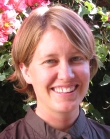 |
Australia: Dr Carissa KLEIN (34 years old) Dr Klein’s research is used by governments and NGOs to inform marine conservation and sustainable management decisions in a way that strikes a balance between biodiversity conservation and socioeconomic viability. She has helped two APEC member economies – Malaysia and the United States – sustainably zone the ocean for fishing and conservation. Ms. Klein has worked with co-authors from APEC economies to publish 27 scientific articles, including in Nature and The Proceedings of the National Academy of Science. Most recently she was the co-author of a paper on “Achieving the triple bottom line in the face of inherent tradeoffs among social equity, economic return, and conservation” in the Proceedings of the National Academy of Science. Dr Klein has been cited over 600 times with a Hirsch1 factor of 13. |
|
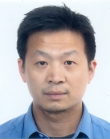 |
Hong Kong, China: Dr Zhonghui LIU (39 years old) Dr Liu researches marine sediments from open ocean and coastal regions to understand oceanic and climatic changes in the past and their possible drivers. He recently participated as a shipboard party member aboard an international research trip with scientists from the United States, Japan, Australia, New Zealand, and the Republic of Korea. He has worked with co-authors from APEC economies to publish 27 scientific papers, including in Nature and Science. Dr Liu has been cited over 500 times with a Hirsch factor of 10. He is currently working closely with scientists from Russia, Chinese Taipei, Japan, and the Republic of Korea. |
|
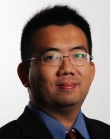 |
Indonesia: Dr Tonni Agustiono KURNIAWAN (38 years old) Dr Kurniawan’s research focuses on wastewater treatment and water purification, specifically applications of water technologies to remove heavy metals from contaminated water. His work seeks to capture water directly from non-traditional sources such as municipal wastewater and restore it to near drinking water quality, using low-cost absorbents to remove aquatic pollutants. Heavy metals are highly toxic and tend to bioaccumulate in the food chain as they are not biodegradable. Dr Kurniawan has worked with APEC co-authors to publish 24 scientific articles. He has been cited over 1,100 times with a Hirsch factor of 12. His most cited paper is “Low-cost absorbents for heavy metals uptake from contaminated water; a review” in the Journal of Hazardous Materials. This paper is ranked among Scopus’ Top 25 Most Cited Articles in Chemical Engineering, placing Dr Kurniawan among the top 1% of researchers in the field of Engineering according to Essential Science Indicators. |
|
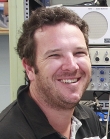 |
New Zealand: Dr Craig RADFORD (34 years old) Dr Radford’s work on bioacoustics in the marine environment is demonstrating that particular underwater habitats have distinct signatures and that this “noise” extends many kilometers off-shore. This work has the power to inform sustainable management practices of marine ecoystems. Dr Radford has published 33 scientific papers, eight that include co-authors from APEC member economies. He has been cited 146 times with a Hirsch factor of 9. Dr Radford is rapidly building a network of collaborators, many from APEC economies, including through a fellowship at the prestigious Woods Hole marine biological laboratory in the United States and with scientists from the University of Windsor in Canada. |
|
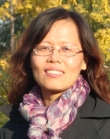 |
China: Dr Changxiang YAN (37 years old) Dr Yan developed the first advanced and comprehensive ocean data assimilation system in China (one of very few such systems in the world), effectively combining ocean observations with numerical models to generate estimates about the ocean’s state and improve climate and ocean forecasts. She has 17 scientific publications and has been cited over 100 times with a Hirsch factor of 4. Collaboration with colleagues from APEC economies is an important part of Dr Yan’s work. For instance, she participated in the bilateral joint project between the Japan Meteorological Agency and the Institute of Atmospheric Physics (Chinese Academy of Sciences) to develop a new assimilation system for dealing with nonlinear ocean physical phenomena. |
|
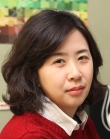 |
Republic of Korea: Dr Yeon-Ju LEE (36 years old) Dr Lee researches marine organisms, discovering chemicals with antimicrobial and anticancer properties. In addition, she is focused on developing new methods for the synthesis of marine natural products, helping to ensure a supply of materials without resorting to replenishing directly from the ocean and risk damaging marine ecosystems. She has published 37 scholarly articles, 4 with co-authors from APEC economies. Dr Lee has been cited over 500 times with a Hirsch factor of 11. Research collaboration in the APEC region includes work on: alkaloids in marine sponges with colleagues at the Pacific Institute of Bioorganic Chemistry (Russia); the synthesis of biologically active compounds with colleagues from Shenyang Pharmaceutical University (China); and marine organisms in the Indian Ocean with a colleague from the Indonesian Institute of Science. |
|
 |
United States: Dr Demian Alexander WILLETTE (31 years old) Dr Willette worked closely with the Philippine National Fisheries Research and Development Institute to develop and carry out applied population genetic research on sardines in order to close certain knowledge gaps related the Institute’s Sardine Management Plan. In addition, Dr Willette is undertaking work on Next Generation Sequencing (NGS), helping to convene expert geneticists and marine scientists from across Southeast Asia and the United States to discuss how this emerging field can advance marine genetic research and address ecological problems across the Pacific. He has published 9 scholarly articles, 8 with co-authors from APEC economies. Dr Willette has been cited 23 times with a Hirsch factor of 3. He is also currently collaborating with colleagues at the Prince of Songkla University of Thailand. |
About the ASPIRE Prize
The APEC Science Prize for Innovation, Research and Education ("ASPIRE") is an annual award to recognize young scientists who have demonstrated a commitment to both excellence in scientific research, as evidenced by scholarly publication, and cooperation with scientists from other APEC member economies. Each APEC member economy may nominate one individual under 40 years of age for the ASPIRE Prize which is sponsored by Wiley and Elsevier, respectively, and carries US$25,000 in prize money.
Further information is available on the 2013 ASPIRE Prize website or by contacting Mr. Mikiharu Shimizu, Program Director for the APEC Policy Partnership on Science, Technology and Innovation, at [email protected].
1: The Hirsch factor of h-index attempts to measure both the productivity and impact of the published work of a scientist or scholar. The index is based on the set of the scientist’s most cited papers and the number of citations that they have received in other publications.

